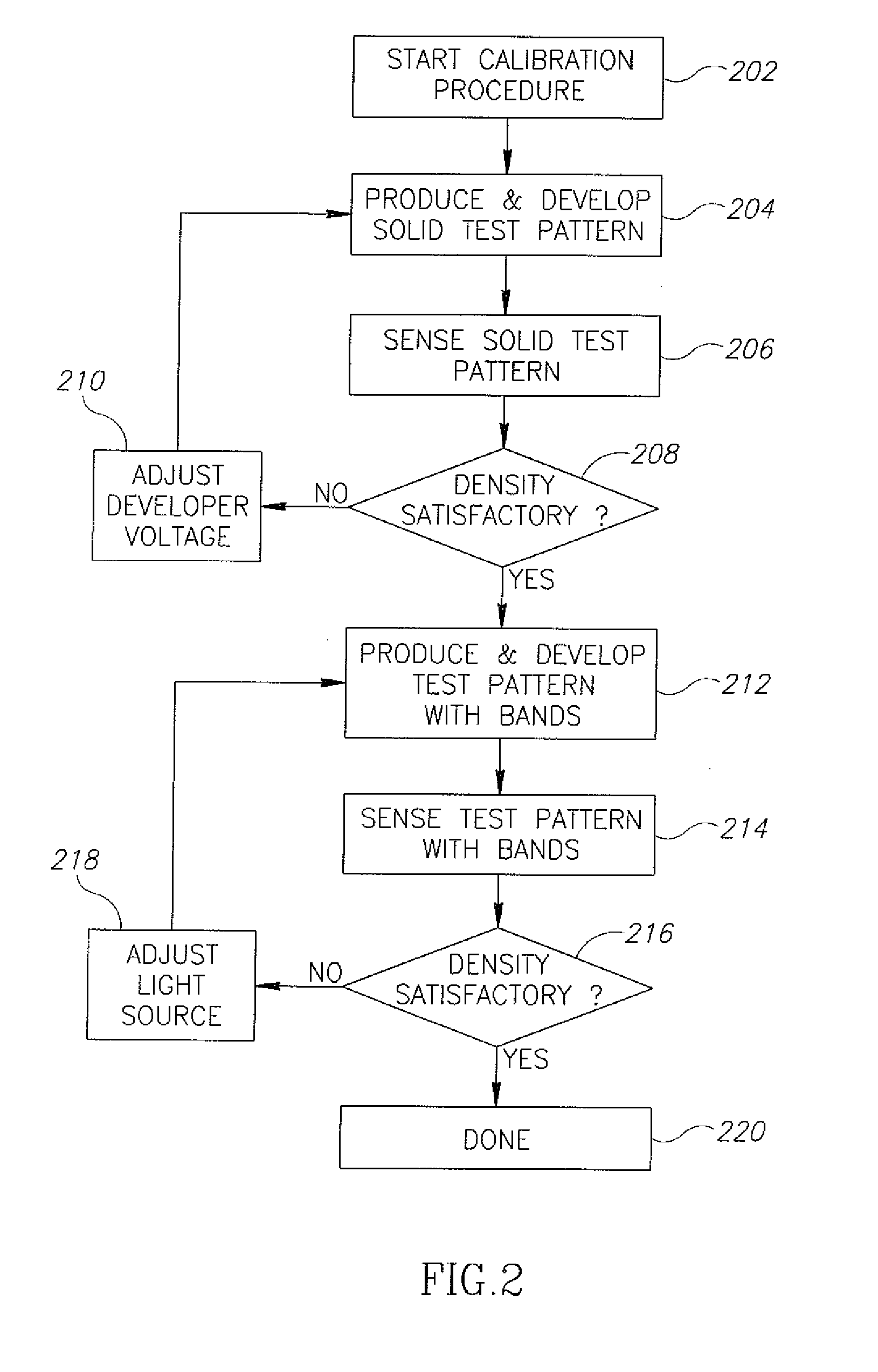Dot Gain And Color Linearization Dual Calibration
- Summary
- Abstract
- Description
- Claims
- Application Information
AI Technical Summary
Benefits of technology
Problems solved by technology
Method used
Image
Examples
Embodiment Construction
[0035]FIG. 1 shows an electrographic printer 100. A light source 102 produces a beam 104, for example from a laser, which swings back and forth, as indicated by arc 106, thereby scanning the surface of a charged photosensitive cylinder 108, along a line 110, and locally discharging the surface when the laser beam is turned on. The scanning is performed, for example, by a mirror, not shown, in light source 102, which rotates or swings back and forth while the beam reflects from it. Photosensitive cylinder 108 rotates, in a direction indicated by arrow 109. Scanning beam 104 produces a two-dimensional latent image of charged and discharged regions on the surface of photosensitive cylinder 108, by turning on and off, or modulating its power, as the beam scans and the photosensitive cylinder rotates. The latent image is developed into a toner image when the surface passes a development station 112.
[0036] From time to time printer 100 undergoes a calibration procedure, in which a solid ...
PUM
 Login to View More
Login to View More Abstract
Description
Claims
Application Information
 Login to View More
Login to View More - R&D
- Intellectual Property
- Life Sciences
- Materials
- Tech Scout
- Unparalleled Data Quality
- Higher Quality Content
- 60% Fewer Hallucinations
Browse by: Latest US Patents, China's latest patents, Technical Efficacy Thesaurus, Application Domain, Technology Topic, Popular Technical Reports.
© 2025 PatSnap. All rights reserved.Legal|Privacy policy|Modern Slavery Act Transparency Statement|Sitemap|About US| Contact US: help@patsnap.com



